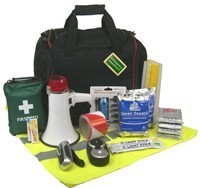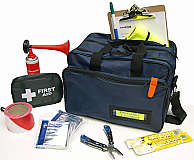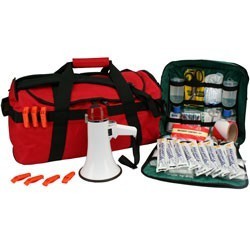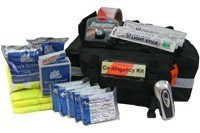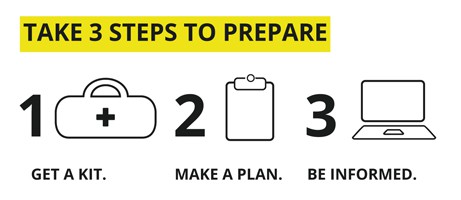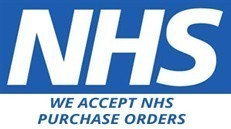Business Preparedness
Business Preparedness = Business Resilience
Today, the hazards and threats we face are significant and many. Emergencies and disasters such as fire, flooding and terrorism can happen anytime anywhere with little or no warning as we sadly witness in the UK and around the world. Understanding the risks and how to mitigate them can help protect people and property, making all of our communities safer. Naturally, this includes business.
For UK businesses of all sizes this means Business Preparedness: practical tools for contingency planning, crisis management and business continuity as well as aspects of health and safety, first aid and security. This may sound complex but is actually quite straightforward and simple:
Business Preparedness: get a kit – make a plan – be informed
Business Preparedness brings together and extends what any business is legally obliged to do* in a very practical way. It follows the latest government guidance** which specifically recommends a so called emergency ‘grab bag’ or ‘crisis response kit’. For more information see what you must plan and prepare for, Emergency GrabBag what and why and Business Continuity - Business Contingency - Preparedness for Business.
Why Business Preparedness? Building capacities, extending capabilities, survival.
99% of all UK businesses are SMEs, small and medium sized enterprises: that’s 5.5 million SMEs in 2016 with fewer than 250 employees. This also includes so called micro-businesses with up to 9 employees as well as sole traders. Small businesses are ‘the backbone’ of the UK, providing economic diversity and livelihoods, the bedrock of resilient communities. Being able to bounce back from disaster fast is crucial not only for business survival but also for all the people and communities connected to it. Naturally, bouncing back happens better with preparedness.
What does Business Preparedness look like?Each business is unique. Yet when it comes to business preparedness there are two basic principles which apply equally: be prepared for safe evacuation (go) and be prepared for safe lock-down and shelter-in-place (stay). | |||||||||||
Business Preparedness: Crisis Management Tools examples of a standard Workplace Kits Business Preparedness: safe evacuation - secure lockdown & shelter in place examples of a standard kits: site evacuation and contigency kits | bespoke site kits | You need 2 types of Emergency Kit: GO *and* STAY
You also need a Business Emergency / Business Continuity PlanSerious disruption to your business can happen anytime anywhere. 80% of SMEs never recover. A robust business preparedness plan that is practised regularly helps you bounce back faster. It pays to be better prepared. Preparedness is easy: 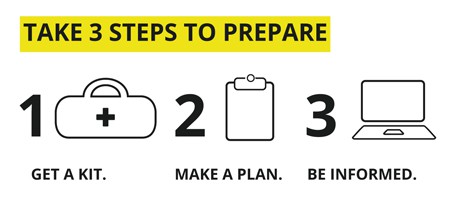 | ||||||||||
How do I build my own Business Emergency Kit? | |||||||||||
| Business Emergency Grab Bag Contents List | ||||||||||
How do I make my own Business Emergency Plan / Business Continuity Plan? | |||||||||||
| Luckily there are a lot of excellent resources and advice available online. Your local authority has a mandate to provide information with regards to emergency preparedness and business continuity so that is an excellent place to start. Get in touch with your LRF (local resilience forum). Not only do they hold and update the local risk register that is more relevant to you than perhaps the NRR National Risk Register, they are also able to provide guidance and templates which are a good start to begin tackling Business Continuity and Preparedness if you are new to the subject. For additional resources, simply see our directory Ready for Emergencies and our information hub for individuals Emergency Plan. Our Preparedness Blog also has entries under category 'Preparedness for Business' which may be useful. The latest NaCTSO guidance on crowded places Updated (06/2017) which is relevant to businesses such as retail shops, event organisers, transport and the night time economy (NTE) such as pubs, clubs, cinemas, theatres, cafés, restaurants etc. contains extensive advice and basic checklists including one for a crisis response kit. With regards to emergency kits that are exactly right for your business, remember that if you don't see exactly what you're looking for in our standard workplace kits section check out custom-made emergency kits for more information or simply contact us for a competitive quotation. | ||||||||||
|
| ||||||||||
This page is also accessed via bit.ly/preparedBusiness
* Health and Safety at Work Act 1974, Management of Health and Safety at Work regs 1992, Corporate Manslaughter / Corporate Homicide Act 2007
** National Counter Terrorism Security Advice Office (NaCTSO), 2017 ‘crowded places guidance’ which is aimed at retail shops, events, transport and night time economy (NTE) such as pubs, clubs, cinemas, theatres, cafés, restaurants etc. and other businesses recommends a crisis response kit.
FSB.org UK small business statistics, 2017


